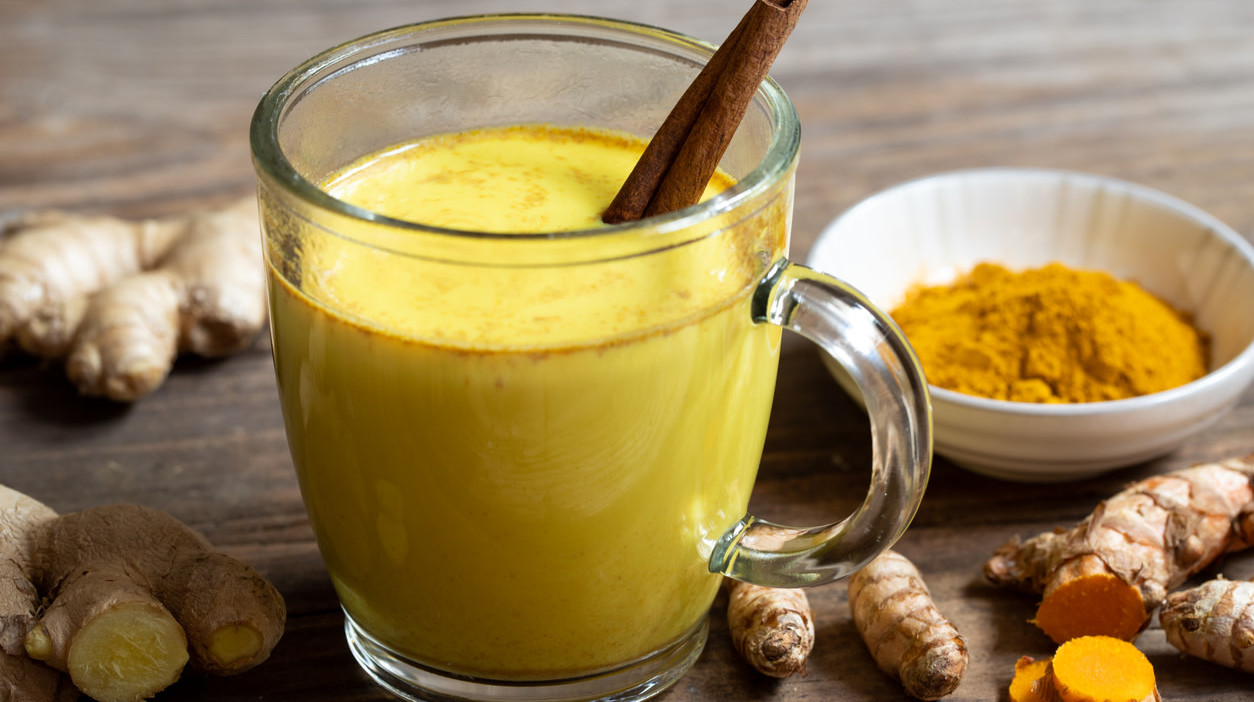When Influencers Discovered Turmeric, My Grandma's Magical Cure-All
If there is one thing I will never forget about my late grandmother, it's that her fingertips were tinted a permanent golden yellow. In our household, turmeric was a magic ingredient and she was the magician, performing culinary tricks and conjuring mystic healing potions.
When I was six years old, I returned to our small village in Ahmedabad, India, for the first time since we moved to New York when I was two. The temperature climbed past 100 degrees, and I had a stubborn stomach virus that rendered me dehydrated and unable to eat. While my mother frantically hunted for Pepto-Bismol and Tums at local pharmacies, my grandmother added a spoonful of turmeric powder to simmering milk, along with a dash of cinnamon, and lightly sweetened it with a teaspoon of honey. Like sorcery, my indigestion was cured.
My grandmother's pantry was lined with an eclectic range of spices: cardamom, garam masala, and cumin to name a few, but haldi (the Hindi word for turmeric) sat at the forefront. She would refer to haldi as India's gold. Brides and grooms apply a turmeric mask on their skin for a natural radiant glow before their wedding ceremony. Turmeric water is offered to goddess Kali in a common Hindu ritual. Aching joints, acne breakouts, or the common cold are alleviated by its anti-inflammatory and antioxidant properties. And of course, our curries would be devoid of flavor and color without a pinch of turmeric powder.
When my parents moved to the States, they did their best to assimilate to Western culture. They went to English as Second Language classes to mask their heavy accents, learned the nuances of football and basketball, and even learned to drive a car on the other side of the road. We adapted to these changes in part because we had to. "That's how Americans do it," my mom would say, justifying our latest attempt to fit into our new environment. But despite these adaptations, my mother refused to modify our ethnic food or spice levels: this was her rebellious effort to preserve our cultural linkage and to pay homage to my grandmother's cooking.
As a result, I was often mocked by students for eating lunch that was "weird" because it was dyed a neon yellow. One middle schooler warned me that I would turn into Spongebob Squarepants and then wrinkled his nose in disgust and walked away from my "smelly" meal. Discouraged and embarrassed, I would often throw out my food, or shove it down my throat while hiding in a stall in the girls' bathroom. I would beg my mom not to make samosas or other Indian snacks for classroom potlucks. Instead I brought store-bought bagel bites or cookies. Explaining why my food looked, tasted, and smelled the way it did was simply too burdensome.
Years later, in 2016, I was walking through Union Square in New York City when I saw a long line of people outside a coffee shop. It was the middle of winter. They were waiting for the newest Instagrammable fad: bright yellow milk infused with turmeric, a.k.a. turmeric lattes. It didn't take long before my social media feeds were peppered with pictures of this $6 golden concoction. All of a sudden, people were intrigued by turmeric's supernatural powers and, noting its remedial characteristics, vowed to introduce it into their holistic diets.
I had mixed emotions about turmeric's rise to fame. At first, I was thrilled that an integral element of my South Asian diet was entering mainstream American society, finding its place at grocery stores, cafes, and bars. The Kardashians, Gwyneth Paltrow, my 60-year-old neighbor down the street all talked about its powers as a curing elixir. Turmeric transcended all racial, age, ethnic, and gender classifications: It was a blend of my Western and Eastern worlds. People were quite literally milking turmeric for its many uses. Finally, I thought. The secret is out.
However, it didn't take long for that initial exhilaration to be replaced with a growing anger. Where do you draw the line between cultural intersection and cultural appropriation?
For centuries, people on the Indian subcontinent have cultivated items that have become trendy Western culinary staples: ghee, coconut oil, saffron. It was disheartening to learn that what I was once ridiculed for consuming, foods that were instrumental to my Indian identity, were only now accepted because Instagram influencers had popularized them. Up until that moment, I felt like I needed permission to be proud of the dishes that were lovingly and laboriously cooked by my grandmother and mother. Yet, in a blink of an eye, the foods that I had protectively defended were now glorified on a national scale.
It's not uncommon for global foods and spices to find homes in the kitchens of trend-conscious Americans. But food appropriation does not mitigate the discrimination that communities of people faced before the newfound popularity of an ingredient or dish.
I phoned my grandmother and recounted this latest discovery. I could hear her smiling thousands of miles away as she listened to my rant about authenticity and ownership. She snickered when I mentioned that her haldi doodh had gotten a new chic makeover without anyone giving credit to the South Asian community.
After a few minutes, she stopped me. "It's okay," she said simply. "Sharing is caring. Besides, this tastes better at home."
Her response eased my frustration. My grandmother's reaction made me realize that ingredients, like people, move and mix across cultures. Ethnic foods will continue to be adapted and occasionally made trendy, but each new trend is a teachable moment, an opportunity to learn the cultural context of a dish and any sensitivities associated with it. Instead of feeling slighted, I have reason to celebrate these dishes with other foodies and collaboratively appreciate the richness of the culture they come from.
The sorceress strikes again with another magical lesson.
